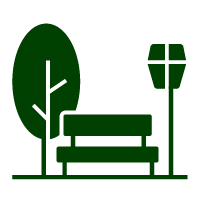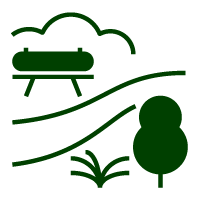Blue Mountains Council’s housing target
How we developed the housing targets
Planned growth: The housing target for each council is based on the number of homes already in the pipeline for delivery which have existing approvals or where rezonings have already occurred.
Projected growth: The targets then factor in the expected delivery of homes which can occur in the next 5 years based on the NSW Government’s planning reforms. Existing infrastructure, ongoing investments, and local constraints have all been considered in the development of the targets.
The following data is the latest available from the Australian Bureau of Statistics:
Providing essential infrastructure to align with more homes
These targets consider existing infrastructure and housing activity already underway.
The NSW Government is committed to providing infrastructure like hospitals, schools, roads, active transport and open spaces to support the delivery of more well-located, well-designed, and well-built homes.
For more information on schools infrastructure upgrades.
For more information on parks and open spaces.
For more information on health infrastructure upgrades.
For more information about Transport for NSW upgrades.
Planning for more resilient and liveable communities
Understanding the status of heat vulnerability and tree canopy coverage is important to help identify community needs and ensure new housing development is sustainable, liveable and resilient to climate change. The statistics below are based on the Department’s most recent heat vulnerability and tree canopy mapping.
Heat vulnerability
Heat vulnerability is determined by a number of factors including demographics, tree canopy cover and land surface temperatures.
The level of heat vulnerability is expressed as a Heat Vulnerability Index (HVI) category from one to five.
In the Blue Mountains, approximately 9% of neighbourhoods have moderate heat vulnerability (HVI category 3 or 4), and 91% have low heat vulnerability (HVI 1 or 2).
1 = low vulnerability, 5 = high vulnerability
Blue Mountains’ urban tree canopy
The Blue Mountains is primarily a metropolitan rural area. Across its urban and rural areas, the Blue Mountains has a total tree canopy cover of 55.5%.
People who live in urban areas with at least 30% green cover can experience improved mental and physical health outcomes. In Blue Mountains, 72% of communities have access to tree canopy cover of 30% or more.
Parks make up most of the Blue Mountains area and provide 62% of its tree canopy. The remaining tree canopy is located on streets and properties, including residential, commercial and industrial lands. The combined urban and rural canopy cover on streets, parks and properties is:
Street Tree Canopy
6% of the Blue Mountains is made up of streets. Streets have 36% canopy cover.
Park Tree Canopy
51% of the Blue Mountains is made up of parks. Parks have 68% canopy cover.
Property Tree Canopy
43% of the Blue Mountains is made up of properties. Properties have 43% canopy cover.
More information on heat vulnerability and canopy cover in Greater Sydney is available at Urban heat and canopy data or visit the NSW SEED Portal for the 2022 heat vulnerability index and 2022 canopy access data.



